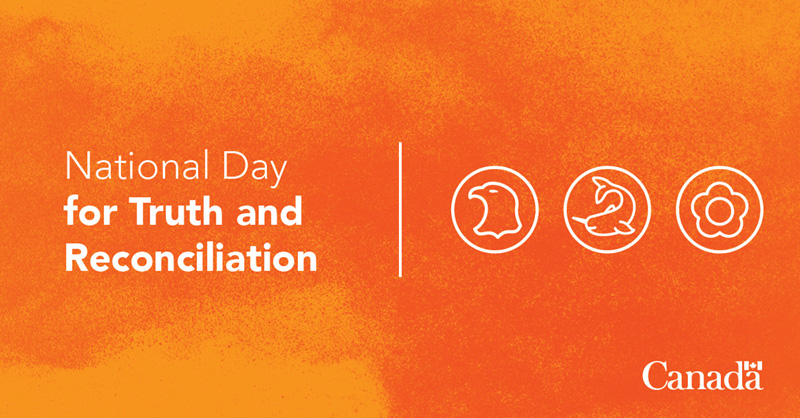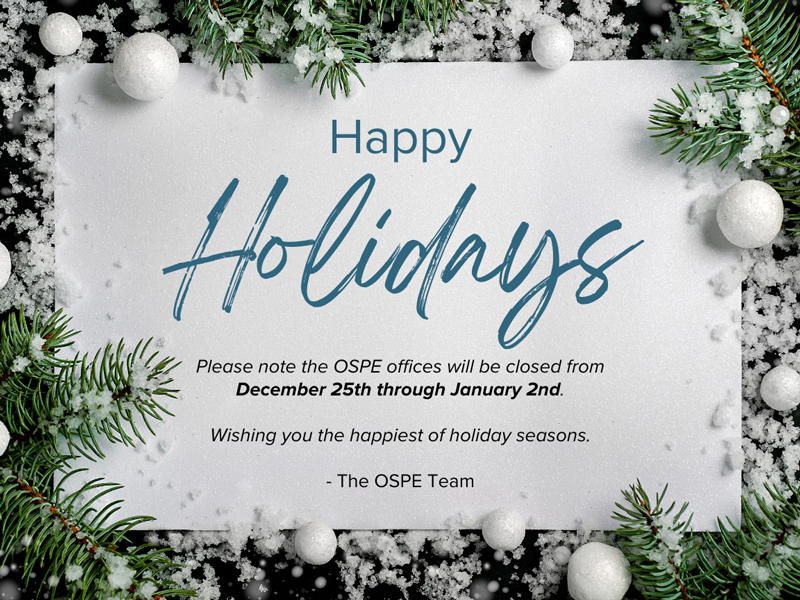September 30 is Canada’s National Day for Truth and Reconciliation (NDTR), a day to honour survivors of residential schools, the children who never came home, their families and communities, and to reflect on the systems that caused harm. While NDTR has been observed nationally since 2021, September 30 is also Orange Shirt Day, an Indigenous-led initiative started in 2013 to raise awareness about the intergenerational impacts of residential schools.
For the engineering profession it is also an invitation to reflect and a call to practice differently. The roads, plants, grids, mines, and digital systems we design can either entrench inequities or help repair them. Reconciliation demands we choose the latter, deliberately, consistently, and with accountability. Reconciliation is not a one-day statement; it is a standard of practice. Indigenous partnership must be embedded across the full project lifecycle.
As the voice of Ontario’s engineers, OSPE also emphasizes that effective policy should be grounded in Indigenous partnership to uphold the highest standards of public safety and environmental stewardship.
Reconciliation and Ontario’s Engineers
OSPE is committed to advocating for policies that prioritize clarity, safety, and accountability. In the wake of Bill 5, we urge government partners to recognize that cutting red tape should not equate to disrespecting Indigenous sovereignty. Policy and engineering that prioritizes Indigenous rights and knowledge is essential to ensure economic progress does not come at the expense of public interest and safety.
To learn more about Bill 5 and its impact on Indigenous reconciliation, below are statements on Bill 5 and Bill C-5 prepared by Indigenous organizations:
OSPE supports implementing the following requirements on government and project managers:
- Early, co-led planning with Indigenous rights-holders and communities, beginning at the concept stage.
- Meaningful consent processes with transparent timelines, accessible technical information, and resourced participation (so communities aren’t asked to review complex designs without capacity support).
- Equity and revenue-sharing options alongside conventional impact benefit agreements, so communities share in long-term value, not just short-term disruption.
- Indigenous procurement and workforce targets tied to real capacity-building, apprenticeships, and professional pathways; engineering included.
- Clear Quality Assurance (QA) and Quality Control (QC) “gates” for reconciliation (e.g., no advancement past 30% design until engagement actions and mitigations are verified).
These are not symbolic gestures; they are deliverables that engineers can specify, track, and sign off on.
Here are practical ways to embed reconciliation in engineering work:
- Scope smarter: Budget and schedule for Indigenous engagement and knowledge integration from day one.
- Design with two knowledge systems: Integrate Indigenous knowledge alongside western science, for example, using community seasonal rounds to inform construction windows; validating hydrotechnical models with lived experience; and planning cumulative effects, not just single-project impacts.
- Data stewardship: Respect Indigenous data sovereignty. Co-develop monitoring plans and ensure communities own or co-govern the data that affects their lands and waters.
- Procure for outcomes: Include Indigenous procurement requirements, mentorship clauses, and subcontract packaging that creates genuine local opportunities.
- Build local capacity: Pair internships, EIT placements, and technologist roles with funded coaching so participants can progress toward certification and licensure.
- Measure what matters: Add reconciliation Key Performance Indicators (KPIs) to project dashboards—engagement milestones met, local hires trained, Indigenous businesses contracted, mitigations implemented and verified, right beside cost and schedule.
- Plan for operations: Co-develop operations and maintenance strategies with communities, including training for local operators, long-term environmental monitoring, and a clear hand-off of responsibilities and budgets.
The trust built through these actions enhances a project’s physical safety. Projects that are co-designed with rights-holders are more durable, lower risk, and more resilient over their lifecycle. Reconciliation strengthens engineering outcomes through better siting and permitting, fewer redesigns, improved environmental performance, stronger local ownership, and faster problem-solving when conditions change.
What OSPE is doing
- Policy & submissions: Building on our Bill 5 comments, we continue to recommend policy incorporating reconciliation in infrastructure, energy, and industrial projects.
- Pathways into the profession: We’re working with partners to expand training, mentorship, and employment pathways for Indigenous students, technologists, and engineers across Ontario.
- Member learning: Upcoming sessions in the OSPE Engineering Academy will help members apply reconciliation principles to planning, permitting, water and energy projects, construction management, and monitoring.
You can register now for Reconciliation in Engineering – Indigenous Voices Make Better Projects.
A call to members
On the National Day for Truth and Reconciliation, we invite OSPE members to:
- Add reconciliation checkpoints to your team’s project templates.
- Review an active project’s engagement plan and budget—does it resource participation fairly?
- Identify a scope item that could be co-developed with a local Indigenous partner.
- Mentor an Indigenous student or early-career professional.
Reconciliation is not separate from engineering. Incorporating Indigenous reconciliation into engineering is a step towards infrastructure that is reliable, safe, ethical, and designed with the people it affects. Let’s keep doing the work, together.






Leave a Comment